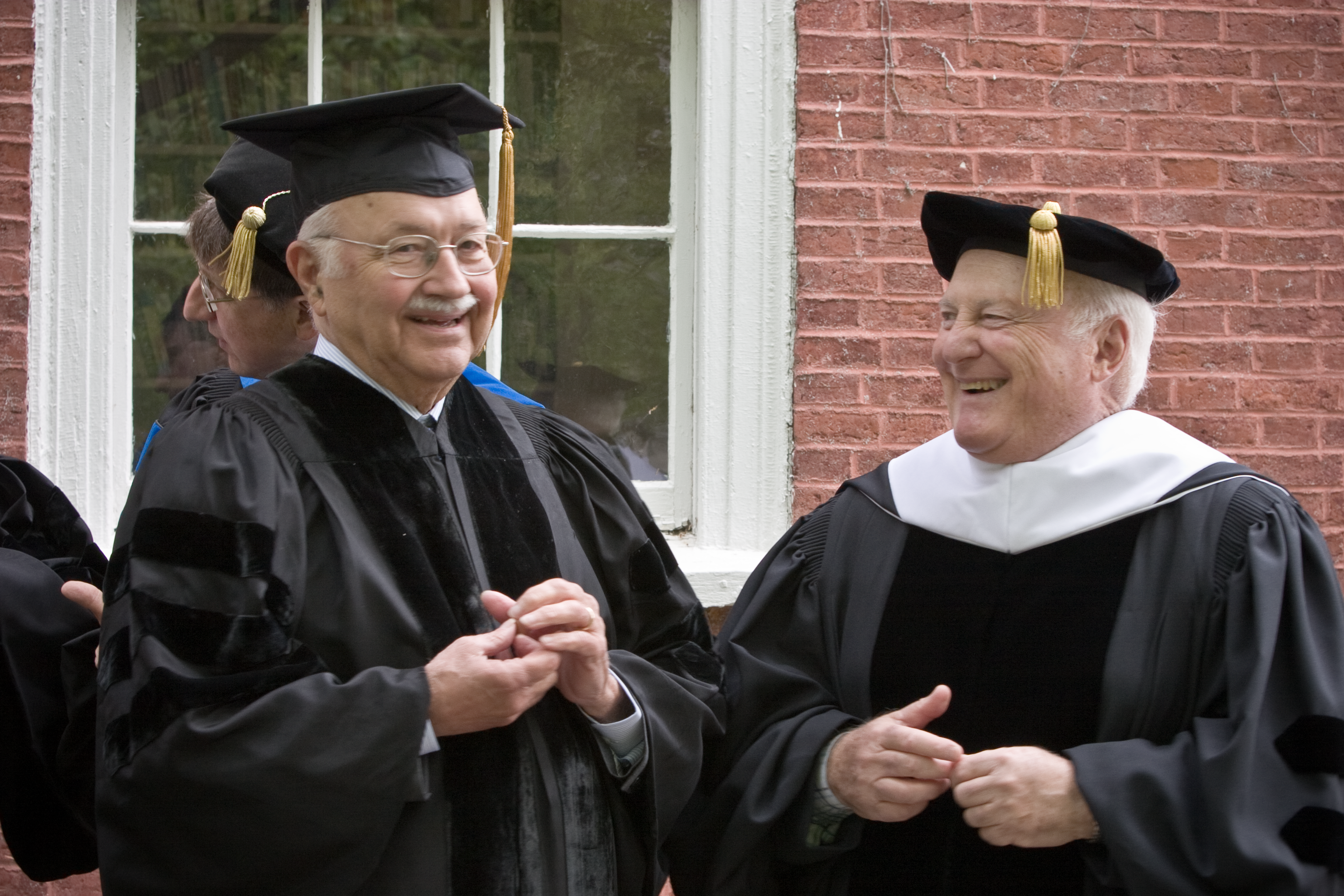What’s in a name: Buck Fitness Center
February 7, 2025
 Courtesy of Bowdoin Athletics
Courtesy of Bowdoin AthleticsWhen Director of Athletics Tim Ryan ’98 first stepped onto Bowdoin’s campus, student fitness facilities looked very different than they do today.
“When I first arrived in the fall of 1994, what we would now consider the fitness center was a very small lifting space that is now the space where we store uniforms in Farley Field House,” Ryan said.
To current students, the idea of fitness on campus is likely synonymous with the Peter Buck Center for Health and Fitness, a 44,659-square-foot, LEED Silver-certified building that houses athletic offices and health and wellness spaces over a two-story gym facility.
The building is named for Peter S. Buck ʼ52, Hʼ08, whose donation to Bowdoin’s 2006 capital campaign financed its construction. A native of South Portland, Maine, Buck co-founded the sandwich chain Subway and used much of his resulting wealth to fund a variety of philanthropic projects.
After graduating from Bowdoin, Buck completed master’s and doctorate degrees in physics at Columbia University before working as a nuclear physicist for General Electric and United Nuclear. However, his most well-known professional venture came in 1965, when he partnered with Fred DeLuca, the son of a family friend, to open a sandwich shop that would eventually become the global restaurant chain Subway.
The two men envisioned the original store, which opened as “Pete’s Super Submarine Sandwiches,” as an easy way to finance DeLuca’s college education. However, the company quickly outgrew its humble origins, taking advantage of the franchise model to create the chain restaurant known today.
After the success of Subway, Buck turned his attention to philanthropic pursuits. In 1999, he and his wife, Carmen Lucia Passagem, founded the Peter and Carmen Lucia Buck Foundation, which provides funds for educational initiatives and scientific research. He also served as a trustee of the Smithsonian National Museum of Natural History, to which he donated several valuable artifacts.
Buck’s donation to The Bowdoin Campaign, the fundraising initiative that provided the funds for the Buck Center’s construction, came at a time when Bowdoin students were in need of new fitness facilities. The Watson Fitness Center, which occupied the part of Smith Union now devoted to the Mail Center and game room, was too small to properly meet increased student demand.
In 2009, the construction of the Buck Center introduced two levels of exercise equipment.
“[This] quadrupled the amount of space we had for both cardio and lifting for students,” Ryan said. “It really was a game changer.”
Along with its array of equipment, the gym space also provides an opportunity for students to interact with members of the Bowdoin community and other Brunswick residents. For Anyi Sun ʼ26, these interactions are a recurring theme of working behind the front desk in the Buck gym.
“I tend to work the morning shifts,” Sun said. “So I’ll see a lot of community members. They’ll get to know whoever’s behind the desk, and they love to come over and chat.”
Above the gym, the second and third floors of the Buck Center contain athletic offices, group fitness spaces, the health and wellness departments and multipurpose rooms that can be used as academic spaces. Kathy Thorson, a nurse practitioner with Bowdoin Health Services, appreciates the integration of these various elements within the space.
“I like that the gym is downstairs, and we’ve got wellness here at the end of the hall with the yoga room and the meditation room,” she said. “It feels like a health center, not just a medical clinic.”
Thorson sees the location of the Buck Center as a particular asset for her work.
“We’re very centrally located on campus, but also removed a little bit,” she said. “And being on the third floor does provide some privacy.”
Ryan considers the building’s accessibility and its integration of multiple aspects of student life to be a major advantage.
“The location really helps to facilitate students stopping by and checking in with coaches and having conversations,” he said. “We also have two classes a day that take place in the large conference room that we have. I love the connection between our Athletic Department office space and our coaches and the academic experience of students.”
Peter Buck’s contribution to student life at Bowdoin is unlikely to be forgotten.
“The College is incredibly grateful for his support of the facility and the vision of having an all-encompassing location for health and wellness for students,” Ryan said of the building’s namesake.

Comments
Before submitting a comment, please review our comment policy. Some key points from the policy: